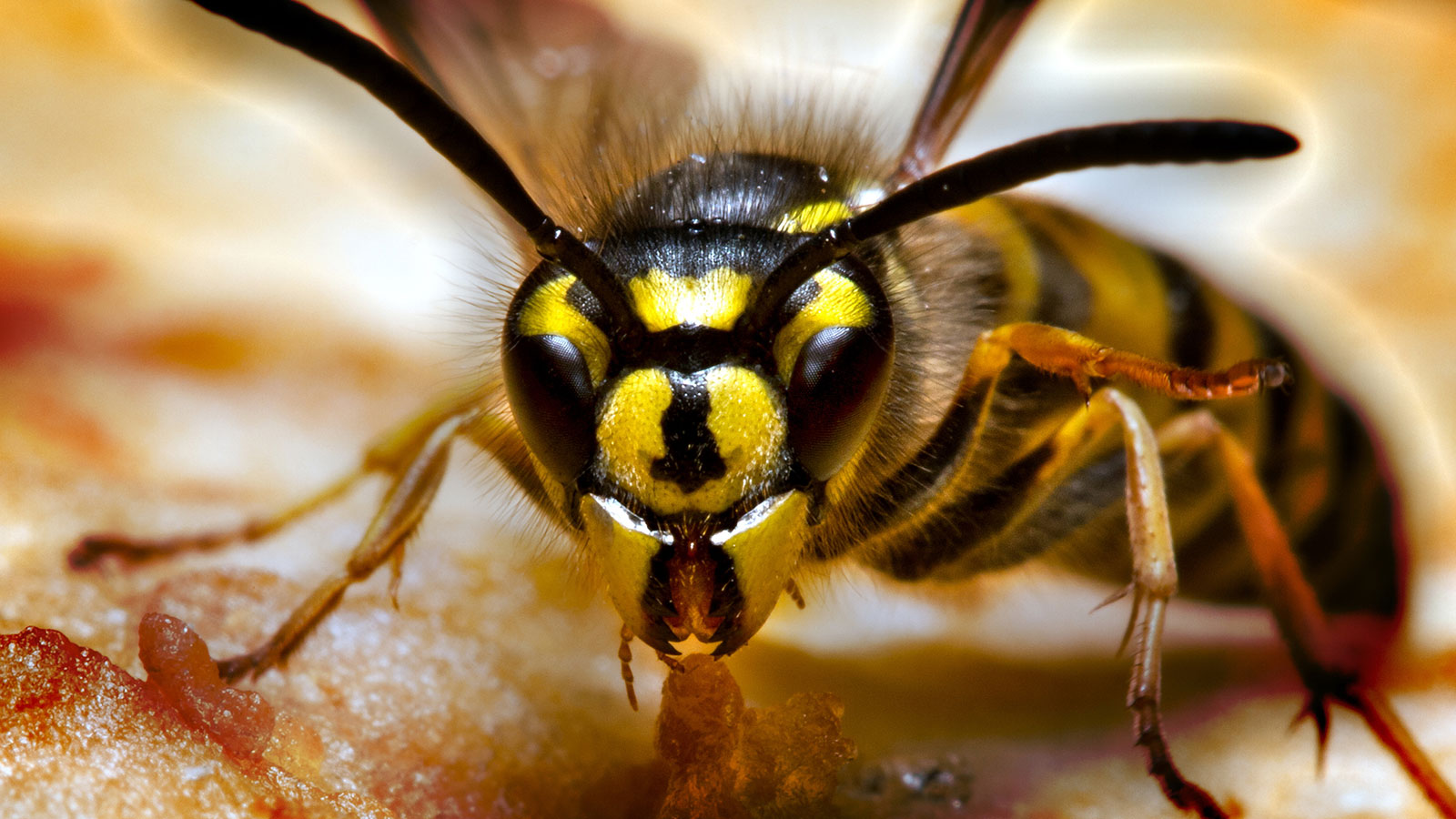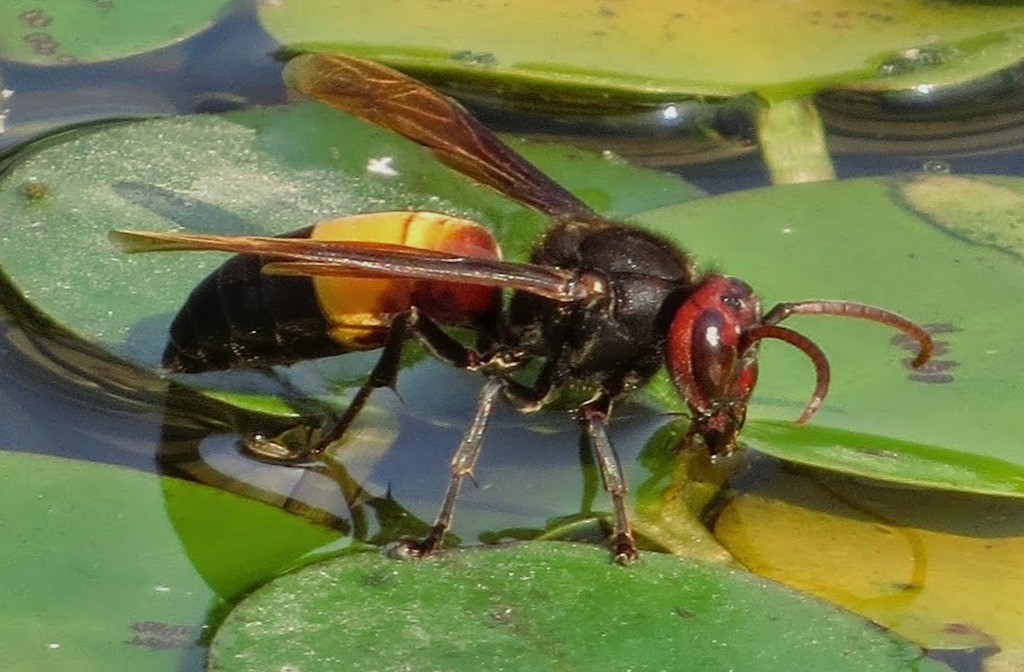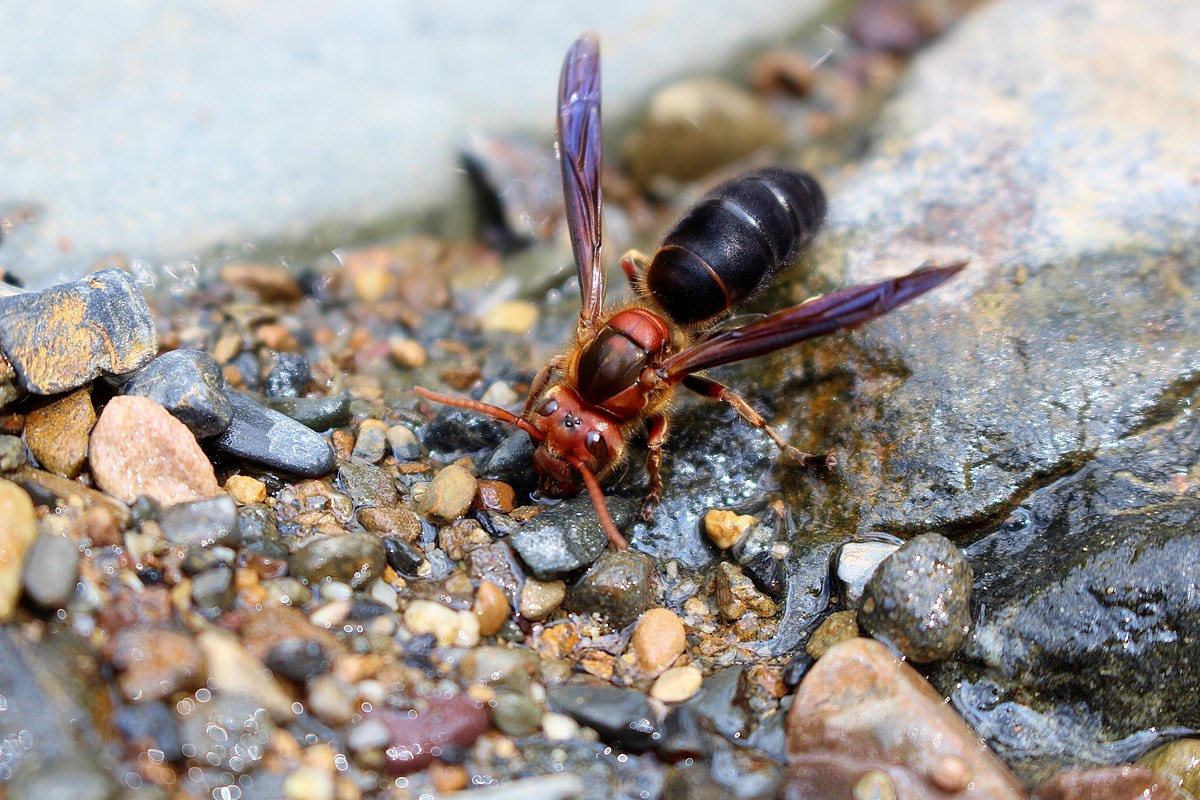Hornets are a type of wasp that are known for their large size and sometimes aggressive behavior. There are about 20 known species of true hornets, most of which are native to Eurasia, and they are closely related to yellowjackets.
In this article, we will explore the different types of hornets and find out which ones are the most aggressive. Knowing which hornets are the most aggressive can be crucial to staying safe in their presence. We will also discuss the behavior and habitat of each type of hornet to help you better understand these buzzing creatures.
You are reading: Types Of Hornets And Which Ones Are Most Aggressive

Types Of Hornets And Which Ones Are Most Aggressive
European hornet
This is a prevalent type of hornet in North America, and it is native to Europe.
They measure roughly 3/4 to 1 and 3/8 inches in length and display a brown hue with yellow bands on their abdomen and a pale-colored face. They build fragile, tan-hued paper nests in hidden locations such as hollow trees, barns, outbuildings, attics, and abandoned bee hives.
Bald-faced hornet
This is a member of the yellowjacket family and is aggressive. They can sting repeatedly, and their sting is very painful. They build paper-like nests, which are grayish-brown, inverted, pear-shaped, and up to three feet tall with the nest entrance at the bottom.
Each nest consists of a number of horizontal layers, stories or “tiers” of circular combs, one below the other completely enclosed by a paper-like envelope as a covering. Also, the cells are not exposed to view. Nests are built hanging from trees, bushes, vegetation, and occasionally buildings.
Lesser Banded Hornet

The lesser banded hornet (Vespa affinis) is a small to medium-sized hornet that is widespread throughout tropical and subtropical Asia. Queens can reach up to 30mm, males 26mm, and workers average 22 to 25mm in length. They have a black body with a bright orange or yellow band on their abdomen.
Read more : Discover The 4 Types Of Rattlesnakes In Kansas
The lesser banded hornet has a flexible diet and feeds on tree sap, nectar, fruits, and larvae. They usually build their nests above ground on trees, bushes, shrubs, and buildings.
The aggressive behavior of the lesser banded hornet, when provoked, combined with their tendency to construct nests in easily disturbed areas, has earned them the reputation of being one of the most dangerous hornets.
Black-Bellied Hornet

The black-bellied hornet (Vespa basalis) is a species of hornet native to Taiwan. It is one of the most dangerous species of hornet on the island, and its venom induces edema.
Colonies of black-bellied hornets may have as many as 5,000 individual hornets. The black-bellied hornet has a black body with a yellow face and a distinctive black band on its abdomen.
There have been no known introductions of this species outside of Taiwan, although one specimen was photographed in Richmond, British Columbia, Canada, in July 2019.
However, this is believed to not represent a local population. The black-bellied hornet is known for its aggressive behavior when provoked, and its venom can be dangerous to humans.
Black Hornet
There is no specific information about a hornet species called “black hornet” in the search results. However, there is a species of wasp called the “great black wasp” (Sphex pensylvanicus), which is a type of digger wasp found across most of North America.
The great black wasp is a large, black wasp that can grow up to 20-35 mm in length. They have a sleek black body with smoky wings and no noticeable patterns or stripes.
The sting of the great black wasp is painful but does not swell like other wasps. The great black wasp is not aggressive and is an important predator of harmful insects and a good pollinator of flowering plants.
Yellow Hornet
Read more : Discover The 10 Types Of Wolf Spiders
Vespa simillima, also known as the yellow hornet or Japanese yellow hornet, is a common hornet species in the Eastern Hemisphere. Here are some key facts about the yellow hornet:
– Workers are generally 17 to 23mm in length.
– The yellow hornet has extensive yellow markings on its abdomen.
– There are different color forms of the yellow hornet, including a darker and hairier form found in Hokkaido, the Korean Peninsula, Eastern Siberia, and China, and a yellow form that predominates in Japan.
– The yellow hornet should not be confused with the Asian giant hornet, which has a color form sometimes referred to as the “Japanese giant hornet”.
– The yellow hornet is harmful to humans and can be aggressive when provoked.
– The most recent taxonomic revision treats all subspecific names in the genus Vespa as synonyms, effectively relegating them to no more than informal names for regional color forms.
Overall, the yellow hornet is a common and potentially dangerous species of hornet found in the Eastern Hemisphere.
Southern Giant Hornet
The southern giant hornet (Vespa soror) is a species of hornet present in India, Northern Thailand, Laos, Northern Vietnam, and parts of South China, including Hong Kong, Guangdong, Fujian, and Hainan Island. Here are some key facts about the southern giant hornet:
– The body lengths of the workers range from 26–35 mm, and those of queens range from 39–46 mm.
– Their nests are typically subterranean and found in forested areas.
– They are aggressive predators and have been observed to attack the nests of honeybees, wasps, and smaller hornet species.
– They also prey on mantids, dragonflies, butterflies, grasshoppers, and small vertebrates such as geckos.
– Hornets were observed to spend less than half the time at nest entrances if they were spotted, and 94% less time trying to chew their way in.
– The southern giant hornet is closely related to the northern giant hornet (Vespa mandarinia), which is also known as the Asian giant hornet.
– The Entomological Society of America has adopted “southern giant hornet” as the common name for Vespa soror.
Overall, the southern giant hornet is a large and aggressive species of hornet found in Asia.
FAQS
1. What are the most common types of hornets?
The most common types of hornets include the European hornet, bald-faced hornet, lesser banded hornet, black-bellied hornet, yellow hornet, and southern giant hornet.
2. Which hornets are the most aggressive?
The yellow hornet, southern giant hornet, and black-bellied hornet are known for their aggressive behavior when provoked.
3. Are all hornets dangerous to humans?
While not all hornets are dangerous to humans, some species can be aggressive and have painful stings that can be dangerous, especially to those who are allergic.
4. How can I tell the difference between a hornet and a wasp?
Hornets are a type of wasp, but they are generally larger and have more potent venom than other wasp species. They also have a reputation for being more aggressive than other wasps.
5. What should I do if I encounter a hornet?
If you encounter a hornet, it’s best to stay calm and avoid provoking it. If you need to remove a hornet nest, it’s best to call a professional pest control service to handle it safely.
6. Are hornets beneficial to the environment?
While hornets can be dangerous to humans, they are also important predators of harmful insects and can help control pest populations.
Source: https://petstutorial.com
Category: Animals










